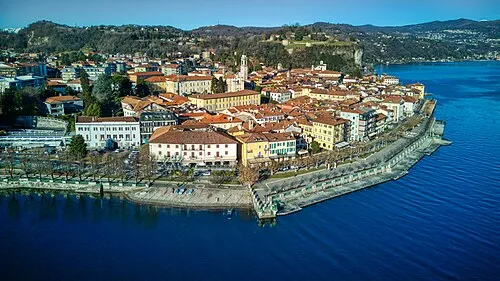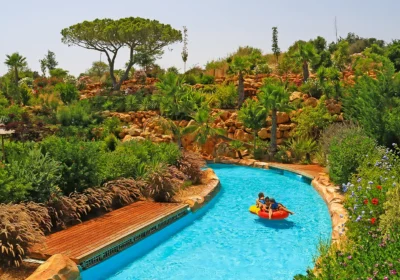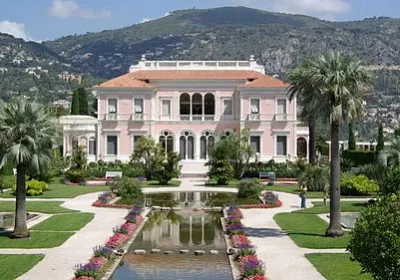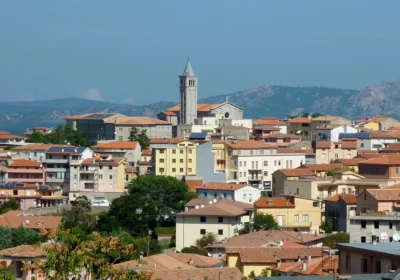Arona tour
The town lies at the southernmost tip of the lake, and definitely deserves a stop for its main attraction, the giant statue of St Charles Borromeo. The future saint was born in the family castle of the Borromeo family in Arona. Unfortunately, only ruins of the castle remain, as it was destroyed by Napoleon’s order.
Carl Borromeo was famous for his fiery faith, his active work on the reformation of the church and the establishment of new educational institutions. But he earned true popular love and popularity for his selfless participation and active charity during the terrible plague that struck Milan in 1576. Already 25 years after his death he was proclaimed a saint.
The grandiose monument was completed in 1698. The statue is 25.5 metres high, and together with the pedestal as much as 35 metres. But the most interesting thing is that inside the metal figure is a staircase, which can be used to climb to the top, there is a viewing platform. The famous Statue of Liberty in New York, erected 200 years later, was built on the example of this monument on the shore of Lake Maggiore. Beneath the statue is a Baroque church dedicated to St Charles.
In the centre of this small town, the ancient Piazza del Popolo, with its 15th-century Rector’s House and porticoes, is worthy of note.
From Arona, in Roman times, there was a Roman consular road connecting Mediolanus (modern Milan) with Verbannus Lacus (Lake Verbano or Lake Maggiore), and from here to the Simplon Pass.
The first written documents attesting to the existence of a socially organised area called Arona date back to 979.
In Roman times, it was the crossing point to the Simplon Pass.
The remains of a furnace and a metalworking workshop have been discovered under the church of San Giuseppe. Roman colonisation is also evidenced by tombstones found almost everywhere in the area.
From 1439, the area was given into the feudal possession of the Borromeo, a family of bankers originally from San Miniato in Tuscany.
When the Visconti family died out with Filippo’s daughter Maria Visconti, who married Francesco I in 1441, the duchy passed to the Sforza family.
With all of the Duchy of Milan, it was under the rule of Spain and then Austria. By the Treaty of Worms (1743) it passed into the possession of the Savoy under Carlo Emanuele III. It was captured by Napoleon’s army and the fortress was demolished after peace agreements with the Austrians in 1801. By decision of the Congress of Vienna in 1815, it was returned to the Savoy family. In 1838, Carlo Alberto of Savoy gave it the title of city. In 1855 a railway line to Novara was opened, and in the IXX century industrial and tourist activities were established.
The lake suffered a catastrophic flood at the end of the century.

















